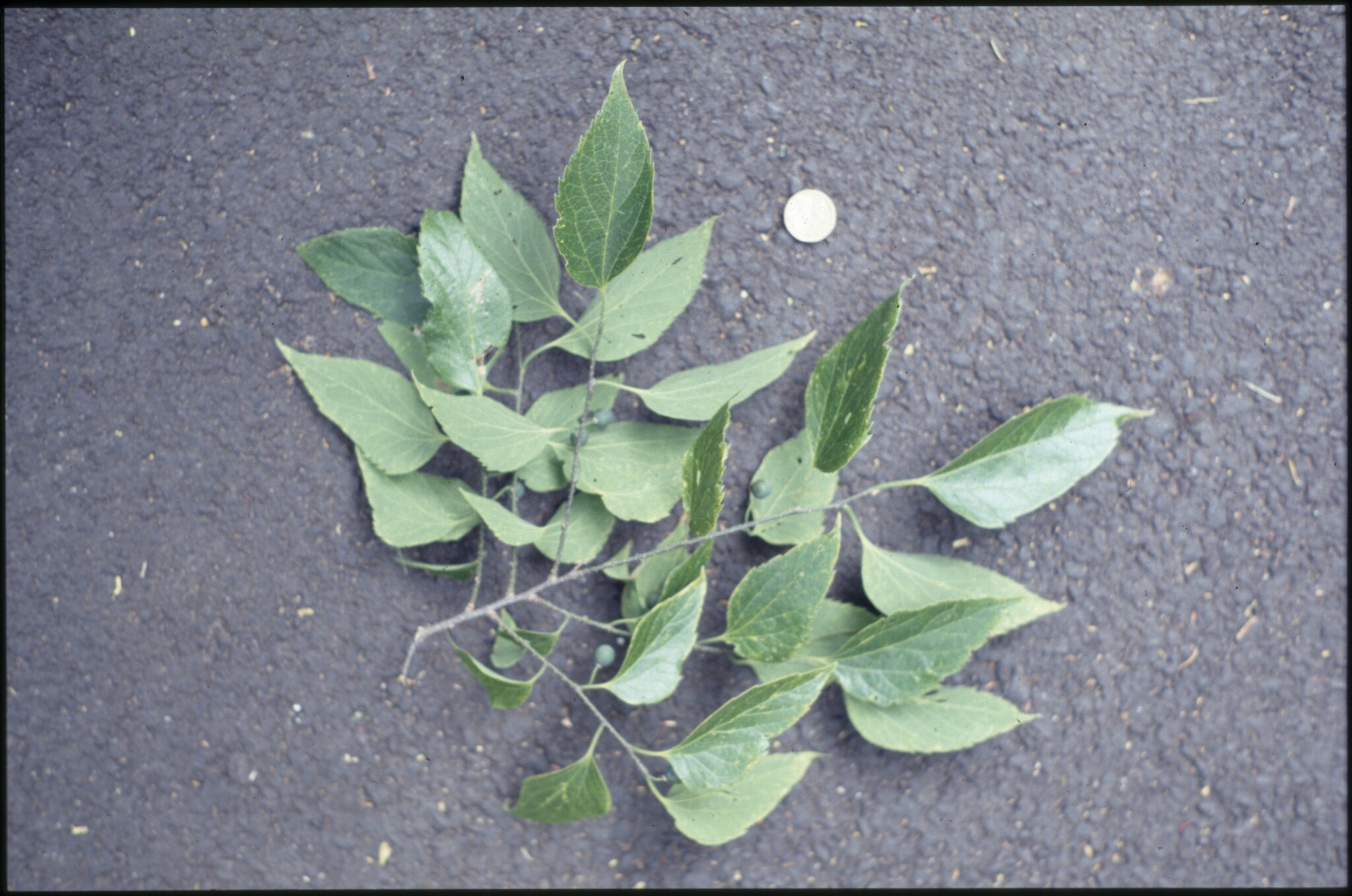
Ancient Greek name.
Mostly deciduous trees, rarely shrubs or vines. Bark generally smooth, grey. Leaves alternate, entire or toothed, generally unequal at the base with 3 main veins from the junction of blade and stalk. Flowers unisexual or bisexual (functionally unisexual), appearing with the leaves, green, axillary. Perianth segments 5-6. Stamens 4-5. Female flowers usually with sterile stamens; early spring. Fruit a drupe with a hard nutlet.
C. tournefortii Lam. from the Balkans, Turkey and Crimean is occasionally offered; it is a small tree or shrub with leaves mostly less than 6 cm long and softly hairy below.
A selection of species may be seen at the Waite Research Institute in Adelaide.
Leaves 3-veined at base; fruit round, pea-size.
About 60 species from the northern hemisphere and tropics.
Source: (1997). Ulmaceae. In: . Horticultural Flora of South-eastern Australia. Volume 2. Flowering plants. Dicotyledons. Part 1. The identification of garden and cultivated plants. University of New South Wales Press.
